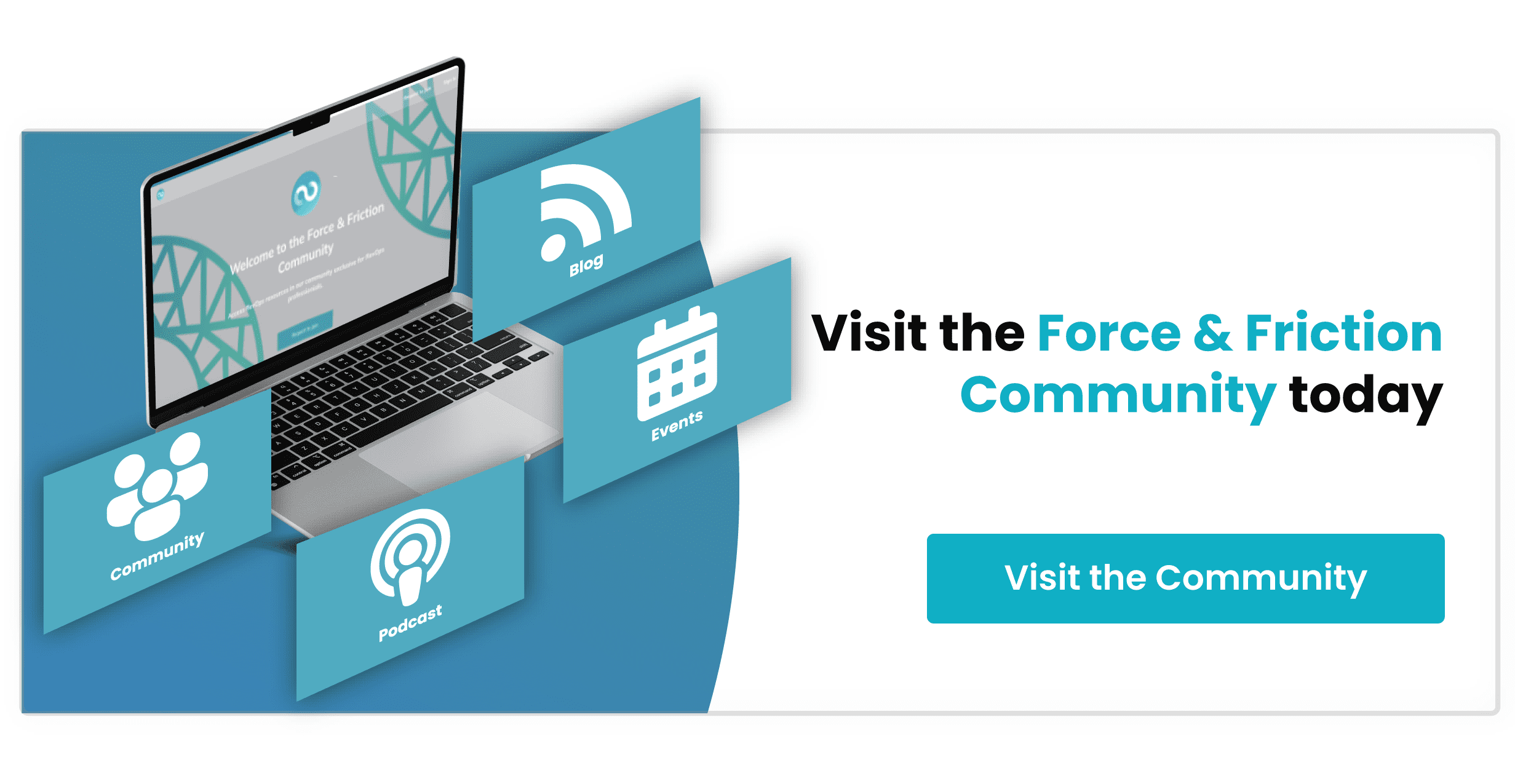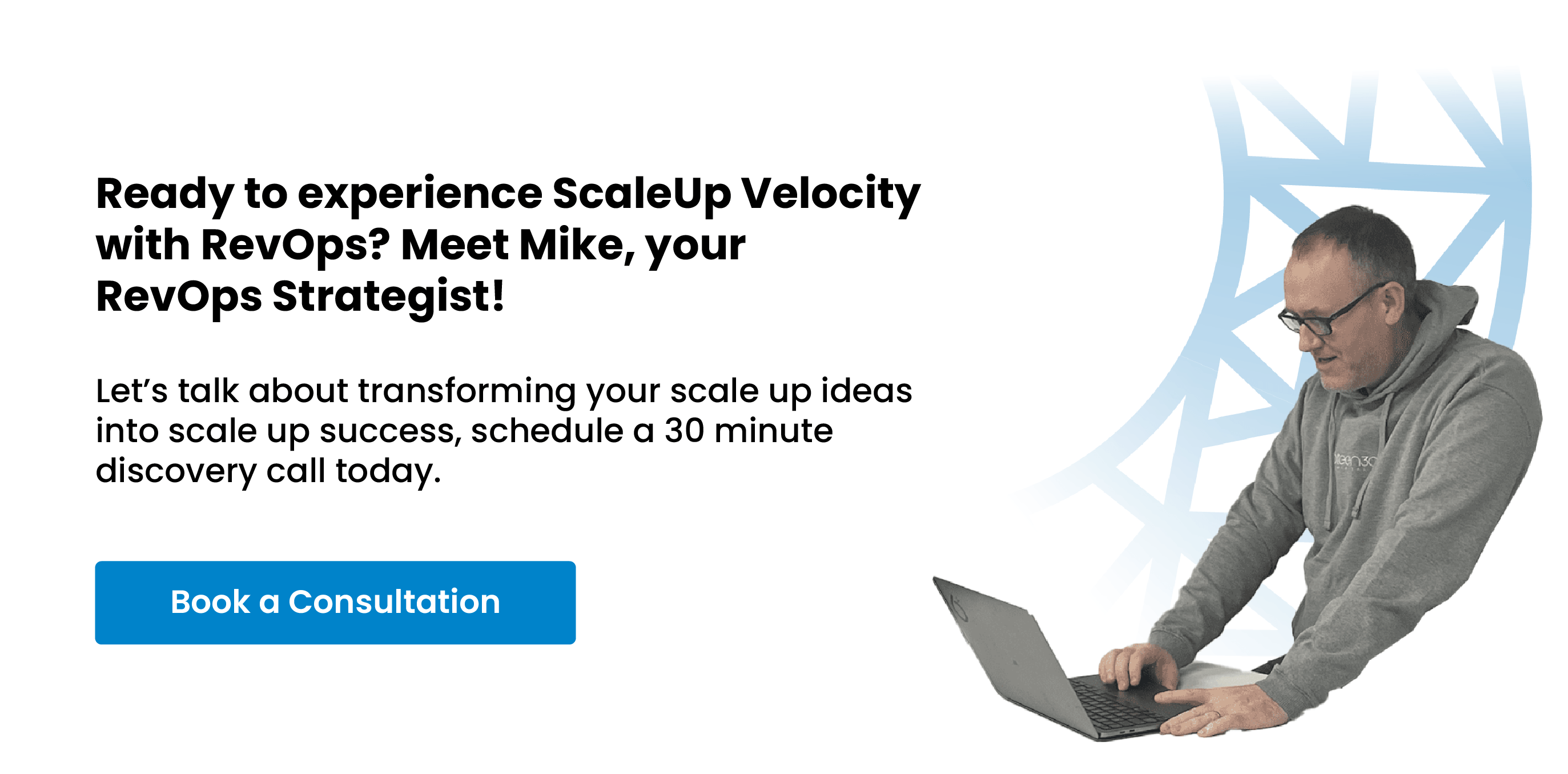
From Strategy to Execution: How to Develop a Successful RevOps Strategy for Your Organization | #RevOpsLife
For scale-up organizations, achieving revenue growth and profitability is essential for long-term success.
For those talking about scaling up, I often hear terms like ‘going for it’ and one popular buzzword that is overused is ‘going to the next level’ - they are rife in almost every management meeting I’ve attended on this subject, then the conversation shifts almost invisibly as someone drifts into tactical execution talking about campaigns, social posts, and the strategic focus is lost.
However, the reality is without a strategy-first approach, organizations, especially those who have been through, survived, and started to thrive via start-up mode - the temptation to figure it out tactically is the biggest mistake I see leaders and C Suites make.
Imagine jumping out of a plane and having to design the chute before strapping it to your back and hoping it opens in time! Crazy right.. Well trying to implement RevOps tactically is equally as crazy.
Here at 6teen30 Digital we live and die by the quote “Strategy Precedes Everything’
Because, as your business scales, it becomes more challenging to manage the various revenue-generating teams and processes effectively, and almost impossible on a tactical first approach. Sure you have to pivot, and change the pitch of the sails, that’s business and smart, but it's dumb as anything if it's your main approach.
That's where Strategy for Revenue Operations (RevOps) comes in.
RevOps is a strategic approach that aligns people, processes, and technologies to maximize revenue growth and profitability.
In this latest #RevOpsLife Series article, I explore why scale-up organizations should focus on starting with a Strategy to successfully implement RevOps as the ultimate way to scale with confidence.
Creating Your RevOps Strategy -
The Key Components:
I’d recommend that you start with the following six key components when considering your strategy first approach to Rev Ops.
The following six strategy points are relevant to all business types, however, for this example, I’ve used these in context for a SaaS organization that is looking to scale up:
1: Alignment:
The first step in the RevOps strategy for a SaaS organization is to align sales, marketing, and customer success teams toward common revenue goals. This involves breaking down (destructive) silos (employees) and fostering a culture of collaboration to ensure that everyone is working towards the same revenue objectives.
Getting Started: Alignment Recommendations
-
Define and communicate revenue goals:
Start by defining specific revenue goals, such as monthly recurring revenue, and communicating them to all revenue-generating teams. Ensure that each team understands their role in achieving these goals.
-
Foster cross-functional collaboration:
Set up regular meetings between sales, marketing, and customer success teams to discuss progress and identify opportunities for collaboration. Encourage the teams to share insights, best practices, and feedback to help everyone achieve their targets.
-
Use shared metrics:
Develop shared metrics that all revenue-generating teams can use to measure their performance. For example, a shared metric for customer acquisition cost would help the sales team and marketing team work together more effectively to reduce costs and increase revenue.
2: Data and Analytics:
The second component the SaaS organization should consider in the creation of its RevOps strategy is to ensure that its data is accurate, consistent, and accessible.
This involves identifying the right data sources, integrating them, and leveraging analytics tools to gain insights into customer behavior, sales performance, and other key metrics. SaaS leaders must use the data to inform decisions in real time.
Getting Started: Data & Analytics Recommendations
-
Identify the right data sources:
Determine the data sources that are most relevant to the revenue generation process, such as CRM, sales pipelines/notes, marketing automation, and financial systems.
-
Collect and store data:
Ensure that all data is collected and stored in a centralized database, such as a data warehouse or data lake, to ensure that it is easily accessible to all teams. Ultimately while you will have multiple data sources, you need a centralized source of truth to work from, we love the HubSpot CRM Professional and Enterprise suites and this is our go-to home for centralized data that all the team can access and view the customer journey in a simple intuitive interface.
-
Leverage analytics tools:
Implement analytics tools such as Google Analytics, Tableau or Power BI to analyze data and gain insights into customer behavior, sales performance, and other key metrics. Give this data simplified visibility, we love and use Databox, using their predictable performance methodology.

3: Process Optimization:
RevOps teams will have to streamline sales, marketing, and customer success processes. This includes identifying and eliminating bottlenecks, streamlining workflows, and standardizing processes across the organization.
Getting Started: Process Optimization Recommendations
-
Map out existing processes:
Start by mapping out the existing sales, marketing, and customer success processes to identify inefficiencies and bottlenecks. Here at 6teen30 Digital, our strategists take clients through a series of Friction Finder workshops to audit the client's existing processes. Learn more about our GamePlan Journey - 30 days to RevOps Strategy Success here.
-
Identify areas for improvement:
Analyze the process maps to identify areas for improvement. Focus on high-impact areas that can generate the most significant revenue gains, such as reducing the sales cycle or improving customer retention. When your teams are aligned and egos and office politics are put aside you will be amazed how with the right team collaboration, how quickly you can improve the positive force and remove destruction friction points that will propel you forward fast.
-
Streamline workflows:
Streamline workflows by removing unnecessary steps, automating manual processes, and using technology to improve efficiency. And that's not the only benefit, it also improves the client/user experience - clients feel appreciated and heard, as new efficiencies are centralized on the customer experience that drives your revenue growth more sustainably, a win-win situation.
4: Technology Enablement:
The fourth component of the RevOps strategy is to identify and implement the right technology solutions to support revenue operations. This involves the adoption of a powerful and robust CRM system, marketing automation, sales enablement, web, and analytics tools to support the revenue generation process. It is essential that all your systems integrate to allow smooth transitions from one stage of the funnel to another. Where you have external applications, ensure you map these and allow for an integration budget along with a realistic production timeline.
Getting Started: Technology Enablement Recommendations
-
Implement a CRM system:
Implement a powerful and robust CRM system like HubSpot to track leads, opportunities, and customer interactions. If you already have a CRM, assess its capabilities against your future requirements of scale, not just where you are at today.
-
Use marketing automation:
Implement marketing automation tools such as Hubspot, Salesforce Pardot, Keap or Marketo to streamline marketing processes and generate leads.
-
Utilize analytics tools:
Implement analytics tools to analyze data and gain insights into customer behavior, sales performance, and other key metrics. Lead scoring is another great day to identify and feed your sales team with highly engaged ‘ready to buy’ prospects.
5: Performance Management:
The fifth component of the RevOps strategy is to set and track KPIs that matter most to the company's revenue growth. These include for SaaS organizations metrics such as
-
Customer acquisition cost,
-
Customer lifetime value,
-
Churn rate, and
-
Revenue per customer.
It is essential for your team to track the metrics in real time and set alerts to take corrective action when necessary.
Getting Started: Performance Management Recommendations
-
Set up dashboards:
Set up a real-time dashboard to monitor key metrics such as the ones above.
-
Track KPIs:
Set targets for each KPI and track progress against these targets. Ensure that everyone has access to these KPIs and understands their role in achieving them. At 6teen30 Digital every team member internally, and externally in our clients ‘Has a number’ that they are accountable for.
-
Use alerts:
Set up alerts to trigger corrective action when performance falls below a certain threshold, or a goal is achieved. Databox has a ton of alerts, emails, slack message notifications, and goal lines to measure if you are on / off track and it can alert you based on your specific rule set even before the milestone is achieved.
6: Continuous Improvement:
The last component of the RevOps strategy is to adopt a culture of continuous improvement. This involves monitoring performance, seeking feedback from customers, and actively seeking out opportunities to improve processes, data quality, and technology solutions to support revenue growth.
As a company, you should always strive to get better, to be more efficient, and to generate more revenue.
Getting Started: Continuous Improvement Recommendations
-
Solicit feedback:
Collect feedback from prospects and customers, your internal sales teams, marketing teams, and customer success teams to identify areas for improvement, be honest - lay it all out there and interpret the feedback with impartiality.
-
Regular reviews:
Conduct regular reviews of processes, technology solutions, and KPIs to identify areas for improvement. Daily check-ins, weekly trajectory, and month-end performance reviews - these should be in your diary, noncancellable and action plans created from each session.
-
Test and learn:
Test new ideas and learn from the results to continuously improve and optimize your revenue operations activities. Use hypothesis statements to ensure you can measure your test environment with a degree of certainty ensuring that any changes are done from well thought-out considerations and not using ‘gut instinct’.
A successful RevOps strategy is essential for SaaS companies looking to scale up and achieve their revenue growth goals.
By aligning people, processes, and technologies, your RevOps teams can optimize every stage of the customer lifecycle and maximize revenue growth and profitability.
By adopting a ‘Strategy Precedes Everything’ approach, following the six key components of a RevOps strategy, and implementing the recommendations covered in this article, as an organization you can achieve alignment, data-driven decision-making, process optimization, and performance management necessary to scale up and achieve their revenue growth and profitability goals.






%20-%20Teal.png?width=500&height=130&name=Force%20%26%20Friction%20-%20Branding%20-%20Logo%20(White)%20-%20Teal.png)